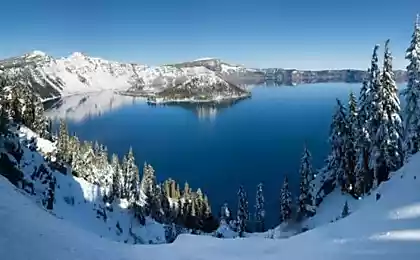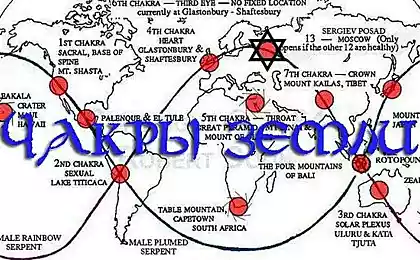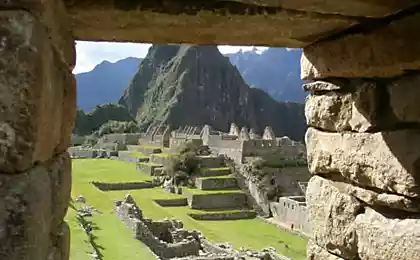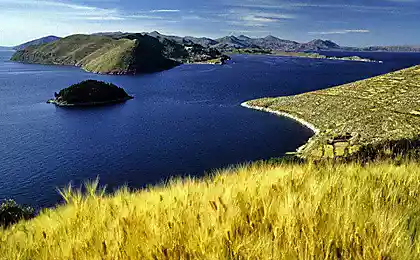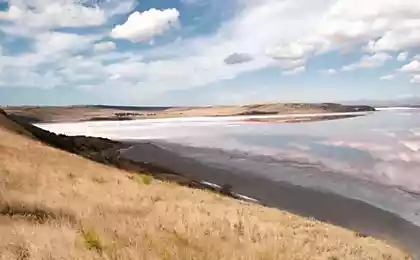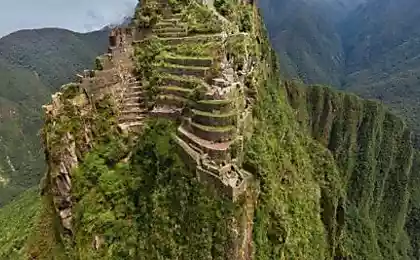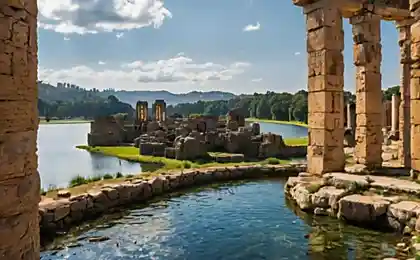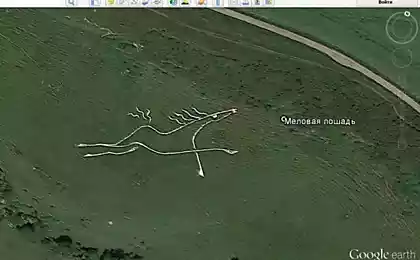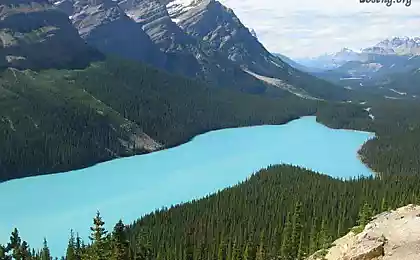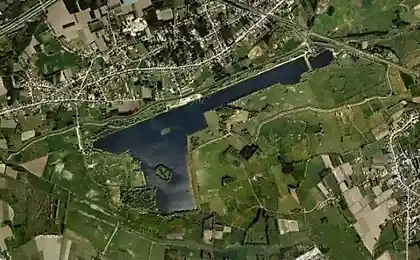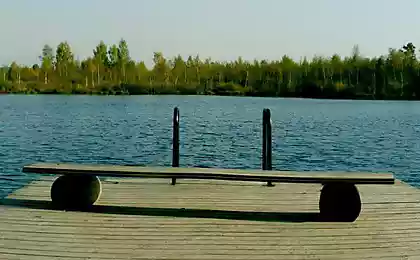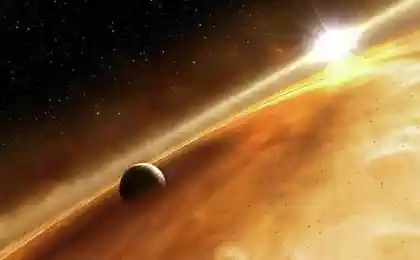533
Lake Titicaca is part of an ancient sea on the border of two South American States
Titicaca is the highest lake located at an altitude of 3812 meters in the Andes on the border of two South American States of Bolivia and Peru. It is the highest navigable lake in the world, the second largest in South America, and is the Keeper of the largest reserve of fresh water on the continent. According to legend, at the bottom of the lake are hidden countless treasures of the ancient civilization that once inhabited the area. The pond is surrounded by many myths and mysteries and for many hundreds of years is very popular among explorers and adventurers, and precious treasures.
The name Titicaca lake got from the Spaniards. It consists of two words: "titi (Puma) and Kaka (rock), which translated from the language of Quechua means "rock Puma". The peoples of Aymara and Quechua called the pond "Mamacita". Before the advent of these peoples to these lands, the reservoir was called "lake Pukin", i.e. in the territory of the country of the people pukin, now defunct.
According to geologists, lake Titicaca close to a hundred million years ago was part of an ancient sea, as exemplified by the presence of marine fish, crustaceans and even sharks, and there are still traces of the surf on the slopes of the mountains and fossils of marine animals on the shores of the lake. Scientists claim that the Andes are quite young mountains that are in the process of growth, and they grow unevenly in the Northern part more actively than in the South. Earlier Titicaca lying on 3750 meters lower than today, and it was a Bay, which as a result of a natural disaster turned into a lake, has risen along with the mountains.
Lake Titicaca consists of two sub-basins connected by a Strait Tikina. The extensive area of the reservoir, located in the North mountain plateau Altiplano is 8300 km2. The average depth of the lake is 140-180 m, and reaches a maximum of 281 m. the water Temperature is always kept at 10-12 C, but at night the coast is often observed freezing water. The salinity of the reservoir is 1%, making it a freshwater lake.
In the lake Titicaca runs about 300 rivers that come from the glaciers surrounding Antiplano. Five major rivers that feed the lake are: the Coat, Suches, Ramis, Iława and Huancane. Flows out of the lake only the river, Desaguadero, which then headed South through the territory of Bolivia to the inland lake Poopó. This flow of water is only about 5% of the total water balance — the rest lost some of the water undergoes evaporation due to the intense sunlight at altitude and strong winds.
On the shores of lake Titicaca are the village peoples Aymara and Quechua, and the floating reed Islands of the Uros, whose number reaches 40, inhabited by Uru Indians.
The initial objective pursued by the creators of the floating pieces of land, was the possibility of displacement in the event of threats to their population. Many of them even have built of reeds fire towers.
The lake is still several Islands: Amantani, taquile, Isla del Sol (Sun Island) and vacation in holiday homes.Low and smooth shore of lake Titicaca, featuring a temperate climate, often bordered by thickets of reeds (totora). This vegetation is most characteristic of the Andean lakes. Occasionally, they form impenetrable thickets that can be seen on the North of the lake.
The Indians Uru conducting on reed Islands most of the time, not only erected his dwelling, but also build boats, make sails and clothing. Feed on representatives of these tribes fish, animals and birds inhabiting the island.
The last decade has seen a trend of rapid disappearance of the people of Uru, which is slowly mixed with the Indians of the Aymara and Quechua. With regard to flora and fauna, the lake Titicaca is quite rich in plankton, fish and other animals. Fish population is represented mainly by carp and carp. Also live in the lake brought from the waters of North America trout, acclimated quite well in these parts. But artificially populated carnivorous salmon caused serious damage to local species. Coastal thickets are home to birds, mainly waterfowl, for example, marsh duck chokes. The world of flora, in addition to cane submitted by mnogoletnim, water hog cholera and other water-demanding vegetation.
The first images of lake Titicaca in Europe was demonstrated in 1553 by the Spanish chronicler Cieza de Leon.Local legend has it that at the bottom of the famous South American pond is the lost city of Wanaka, it keeps the gold of the Incas, which they dumped in the lake during the onset of the Spanish conquistadors. The untold riches have often tried to find. The first major project devoted to the study of the depths of the lake, was headed by the famous Jacques Yves-Cousteau, in 1968 he immersed himself there in a submarine. He managed to find only ancient pottery. In 1980, Bolivian scholar and writer, am a Hutu, Boero the Roh presentation was made on the bottom of the lake, namely in the North-Eastern part, managed to find the remains of ancient settlements. He stated that he found the temple, built of huge stone blocks, and leading to who knows where stone stairs and roads, which are surrounded by thickets of seaweed.
Already in 1988, the American magazine National Geographic organized an expedition to the mysterious lake, but their efforts also proved to be almost fruitless.In the late summer of 2000, the Italian archaeologists and divers found at a depth of 30 meters of huge stone terrace, which, in their opinion, is an ancient bridge, a long wall (about 1 km) and a stone sculpture in the form of a human head-like sculptures of the city of Tiwanaku, located 19 km from Titicaca. The approximate age of found objects of antiquity of 1500 years.
The beginning of 2001 was marked by the confirmation of the existence of the ancient city at the bottom of the famous lake. Italian researcher Lorenzo Epis reported that the dimensions found them on the bottom of the pond of ancient sacred temple is 200 to 40 meters. The lake a long time did not reveal its secrets, and researchers, without dropping hands, and again began to explore its depths. And finally, in early October of this year, their efforts were rewarded: the joint efforts of Belgian and Bolivian archaeologists at the bottom of lake Titicaca, on the Bolivian side of it was discovered a huge number of ancient finds. Their number was about 2000 unique artifacts, including dinnerware and figurines, ceramics, vessels with the head of the Puma, silver and gold items belonging to different eras, including the era of the Inca Empire.
Co-founder of the project, Christophe Delarue, says that they were found archaeological finds of the civilization of Tiwanaku, Inca, and on the surface — material of the XVIII-XX centuries the Project will last three years. During this time, scientists promise to study, evaluate and protect the heritage of past generations. Adjacent to the lake Titicaca site is something to see — it's full of ancient religious buildings. Archaeologists have discovered in the local land traces the five civilizations that existed before the era of the Incas.
Special attention should be paid to the burial towers Sillustani in which we find the graves of local leaders of the Inca Empire, the island of taquile ("the island of knitting men") with the textile Museum, highland village, Cucito known to the ancient Church of Santo Domingo and the island of Amantani, where you can see the temples Pachatata and the Pachamama, located at an altitude of about 4200 meters.Just 20 km from the folklore capital of Peru and part of the largest city of the region of Puno, is the ancient port city of Tiwanaku, towering 30 meters above the lake. Here you can see the stone Kalasasaya, Akapana the pyramid and the Sun gate, built of enormous stone blocks.After climbing to the top of the island of taquile, you can contemplate the stunning views of the lake and surroundings.The floating reed Islands of Uros have become the main attraction of the Peruvian territory — often there are organized tours from Puno. They are called Museum under the open sky.
The locals are happy to meet tourists, show them their traditional reed homes, and ride in boats made of reeds, fed the core of this plant, they sell Souvenirs.
Also worth visiting is the town of Chuchito, which lies 18 km from Puno. There you can see the fertility temple of Inca Uyo, the floor of which there are 13 stones of phallic shape.The duration of a standard tour program is 3 days and 2 nights. It includes a trip to Puno and Juliaca, visit lake Umai, a journey to lake Titicaca on a motor boat, a visit to the reed Islands of Uros, in the village of the natives, located on the island of taquile with its archaeological walks in the parks and hills. In the expanded programme includes a visit to the private island Suasi, where organized a BBQ and overnight. The cost of the tour programs range from 140 to 500 dollars.
From Peru's capital, Lima, to the city of Puno, beside lake Titicaca, can be reached by bus for 42 hours. The cost of the trip will be $ 25. You can also fly to Cusco (50-100 dollars), or go by rail by train, Andean Explorer, which after 10 hours, will arrive in Puno.
Source: udivitelno.com
The name Titicaca lake got from the Spaniards. It consists of two words: "titi (Puma) and Kaka (rock), which translated from the language of Quechua means "rock Puma". The peoples of Aymara and Quechua called the pond "Mamacita". Before the advent of these peoples to these lands, the reservoir was called "lake Pukin", i.e. in the territory of the country of the people pukin, now defunct.
According to geologists, lake Titicaca close to a hundred million years ago was part of an ancient sea, as exemplified by the presence of marine fish, crustaceans and even sharks, and there are still traces of the surf on the slopes of the mountains and fossils of marine animals on the shores of the lake. Scientists claim that the Andes are quite young mountains that are in the process of growth, and they grow unevenly in the Northern part more actively than in the South. Earlier Titicaca lying on 3750 meters lower than today, and it was a Bay, which as a result of a natural disaster turned into a lake, has risen along with the mountains.
Lake Titicaca consists of two sub-basins connected by a Strait Tikina. The extensive area of the reservoir, located in the North mountain plateau Altiplano is 8300 km2. The average depth of the lake is 140-180 m, and reaches a maximum of 281 m. the water Temperature is always kept at 10-12 C, but at night the coast is often observed freezing water. The salinity of the reservoir is 1%, making it a freshwater lake.
In the lake Titicaca runs about 300 rivers that come from the glaciers surrounding Antiplano. Five major rivers that feed the lake are: the Coat, Suches, Ramis, Iława and Huancane. Flows out of the lake only the river, Desaguadero, which then headed South through the territory of Bolivia to the inland lake Poopó. This flow of water is only about 5% of the total water balance — the rest lost some of the water undergoes evaporation due to the intense sunlight at altitude and strong winds.
On the shores of lake Titicaca are the village peoples Aymara and Quechua, and the floating reed Islands of the Uros, whose number reaches 40, inhabited by Uru Indians.
The initial objective pursued by the creators of the floating pieces of land, was the possibility of displacement in the event of threats to their population. Many of them even have built of reeds fire towers.
The lake is still several Islands: Amantani, taquile, Isla del Sol (Sun Island) and vacation in holiday homes.Low and smooth shore of lake Titicaca, featuring a temperate climate, often bordered by thickets of reeds (totora). This vegetation is most characteristic of the Andean lakes. Occasionally, they form impenetrable thickets that can be seen on the North of the lake.
The Indians Uru conducting on reed Islands most of the time, not only erected his dwelling, but also build boats, make sails and clothing. Feed on representatives of these tribes fish, animals and birds inhabiting the island.
The last decade has seen a trend of rapid disappearance of the people of Uru, which is slowly mixed with the Indians of the Aymara and Quechua. With regard to flora and fauna, the lake Titicaca is quite rich in plankton, fish and other animals. Fish population is represented mainly by carp and carp. Also live in the lake brought from the waters of North America trout, acclimated quite well in these parts. But artificially populated carnivorous salmon caused serious damage to local species. Coastal thickets are home to birds, mainly waterfowl, for example, marsh duck chokes. The world of flora, in addition to cane submitted by mnogoletnim, water hog cholera and other water-demanding vegetation.
The first images of lake Titicaca in Europe was demonstrated in 1553 by the Spanish chronicler Cieza de Leon.Local legend has it that at the bottom of the famous South American pond is the lost city of Wanaka, it keeps the gold of the Incas, which they dumped in the lake during the onset of the Spanish conquistadors. The untold riches have often tried to find. The first major project devoted to the study of the depths of the lake, was headed by the famous Jacques Yves-Cousteau, in 1968 he immersed himself there in a submarine. He managed to find only ancient pottery. In 1980, Bolivian scholar and writer, am a Hutu, Boero the Roh presentation was made on the bottom of the lake, namely in the North-Eastern part, managed to find the remains of ancient settlements. He stated that he found the temple, built of huge stone blocks, and leading to who knows where stone stairs and roads, which are surrounded by thickets of seaweed.
Already in 1988, the American magazine National Geographic organized an expedition to the mysterious lake, but their efforts also proved to be almost fruitless.In the late summer of 2000, the Italian archaeologists and divers found at a depth of 30 meters of huge stone terrace, which, in their opinion, is an ancient bridge, a long wall (about 1 km) and a stone sculpture in the form of a human head-like sculptures of the city of Tiwanaku, located 19 km from Titicaca. The approximate age of found objects of antiquity of 1500 years.
The beginning of 2001 was marked by the confirmation of the existence of the ancient city at the bottom of the famous lake. Italian researcher Lorenzo Epis reported that the dimensions found them on the bottom of the pond of ancient sacred temple is 200 to 40 meters. The lake a long time did not reveal its secrets, and researchers, without dropping hands, and again began to explore its depths. And finally, in early October of this year, their efforts were rewarded: the joint efforts of Belgian and Bolivian archaeologists at the bottom of lake Titicaca, on the Bolivian side of it was discovered a huge number of ancient finds. Their number was about 2000 unique artifacts, including dinnerware and figurines, ceramics, vessels with the head of the Puma, silver and gold items belonging to different eras, including the era of the Inca Empire.
Co-founder of the project, Christophe Delarue, says that they were found archaeological finds of the civilization of Tiwanaku, Inca, and on the surface — material of the XVIII-XX centuries the Project will last three years. During this time, scientists promise to study, evaluate and protect the heritage of past generations. Adjacent to the lake Titicaca site is something to see — it's full of ancient religious buildings. Archaeologists have discovered in the local land traces the five civilizations that existed before the era of the Incas.
Special attention should be paid to the burial towers Sillustani in which we find the graves of local leaders of the Inca Empire, the island of taquile ("the island of knitting men") with the textile Museum, highland village, Cucito known to the ancient Church of Santo Domingo and the island of Amantani, where you can see the temples Pachatata and the Pachamama, located at an altitude of about 4200 meters.Just 20 km from the folklore capital of Peru and part of the largest city of the region of Puno, is the ancient port city of Tiwanaku, towering 30 meters above the lake. Here you can see the stone Kalasasaya, Akapana the pyramid and the Sun gate, built of enormous stone blocks.After climbing to the top of the island of taquile, you can contemplate the stunning views of the lake and surroundings.The floating reed Islands of Uros have become the main attraction of the Peruvian territory — often there are organized tours from Puno. They are called Museum under the open sky.
The locals are happy to meet tourists, show them their traditional reed homes, and ride in boats made of reeds, fed the core of this plant, they sell Souvenirs.
Also worth visiting is the town of Chuchito, which lies 18 km from Puno. There you can see the fertility temple of Inca Uyo, the floor of which there are 13 stones of phallic shape.The duration of a standard tour program is 3 days and 2 nights. It includes a trip to Puno and Juliaca, visit lake Umai, a journey to lake Titicaca on a motor boat, a visit to the reed Islands of Uros, in the village of the natives, located on the island of taquile with its archaeological walks in the parks and hills. In the expanded programme includes a visit to the private island Suasi, where organized a BBQ and overnight. The cost of the tour programs range from 140 to 500 dollars.
From Peru's capital, Lima, to the city of Puno, beside lake Titicaca, can be reached by bus for 42 hours. The cost of the trip will be $ 25. You can also fly to Cusco (50-100 dollars), or go by rail by train, Andean Explorer, which after 10 hours, will arrive in Puno.
Source: udivitelno.com
